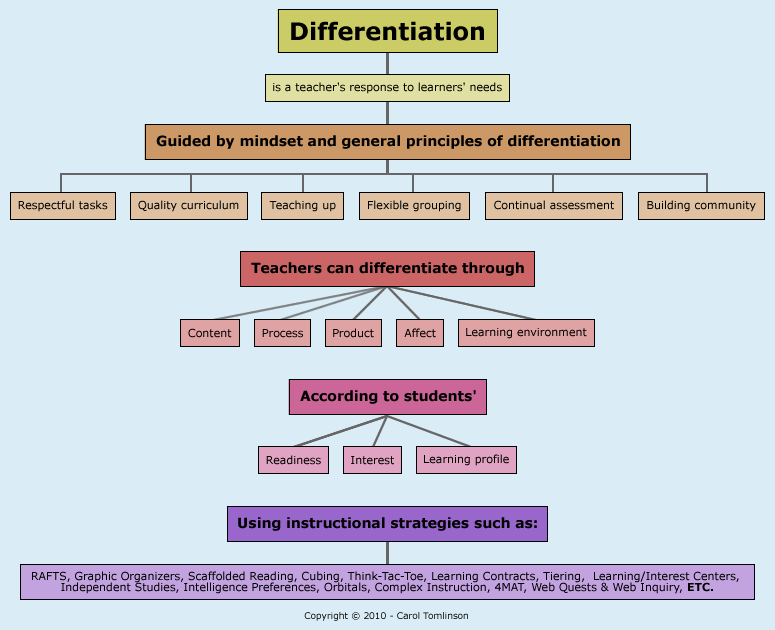Meeting the needs of all learners is a common phrase that echoes throughout school hallways across our country. Classrooms of 2016 host a wealth of diversity, which I believe is both a huge strength and challenge. Over the past 22 years, I have attended a variety of conferences (provincial, national, and international) that have focused on the topic of differentiated instruction (DI). From attending DI workshops, in the early stages of my career, many presenters put forth that differentiated instruction was not that hard to do because we (educators) were doing it already. As a young educator who was spending every spare moment trying to keep her head above water, I was comforted by these words because I could walk away feeling validated that I was probably doing something positive for my kids. My understanding of DI was that it focused on providing choices around interest and students’ learning styles.
In the last five years, differentiated instruction has become a focal point for my growth plan as a staff development specialist, but I am looking at this topic through a different lens. There are three reasons for this: (1) the diversity of needs in my school is tremendous, and teachers want greater support in this area; (2) I believe that I have some misunderstandings around what DI actually comprises; and (3) I feel that I need to deepen my DI skill set repertoire. Below is the key question that has been percolating in my brain over the last while regarding differentiated instruction:
- Are all facets of differentiated instruction EQUAL in their IMPACT to bring about strong student growth?
The first stop on my journey was to get a strong visual picture of all the aspects comprising DI. I was at a workshop facilitated by Carol Ann Tomlinson (guru) and was provided with this visual that conceptually pulled everything together for me.

iCaramba! I must have been bloody sleeping during the early stages of my career. Where the heck did ANYONE think that THIS could be easy???? Differentiated instruction is a powerful tool to improve student learning, but I have come to understand that the different facets comprising DI serve different purposes, which in turn has different degrees of influence on student growth. The professional development of DI that I have attended has really promoted the use of learning styles and student interest. I feel that these aspects have an important influence on student engagement. I also have found that these facets are fairly easy to carry out as an educator, whether you are a freshman or a senior.
The new understanding that I have come to grips with is that using DI as a tool to close student gaps is NOT so easy to perform in the classroom. The use of readiness grouping draws upon a multitude of sub-skills that a teacher must possess. Frankly, this component of DI requires a teacher to possess some highly sophisticated teaching skills. A teacher really needs to know what makes each student tick. He or she needs to have a grasp on each student’s numeracy, literacy, group interaction, inquiry, and ICT skill set levels. These are just a few of the skills an educator must investigate. The teacher needs to have an understanding how each student manages stress, deals with frustration. An educator needs to decipher the mental picture that each student has painted of him or herself as a learner. One also needs to have strong formative assessment skills and REALLY USE student feedback to change classroom instruction practices to support student growth. I feel that too often when I was a full-time classroom teacher, I was entrenched in the business of teaching (meeting timelines, “covering” the curriculum), and I overlooked what student feedback was telling me. Finally, a teacher needs to have a wide array of strategies at his or her fingertips to be able to stop a class in its track, divide the kids up, based on their readiness level, in order to move the bus forward in an effective manner. Knowing how to create strategic student groups is an art unto itself.
So in my opinion, no Virginia, differentiated instruction IS NOT as easy as what you may have been told in the past. And yes, I believe that many teachers, particularly in middle years and high school settings, need much more support in understanding and implementing this facet of differentiated instruction. I look forward to sharing my personal growth in this area over the next 12 months.

Leave a comment